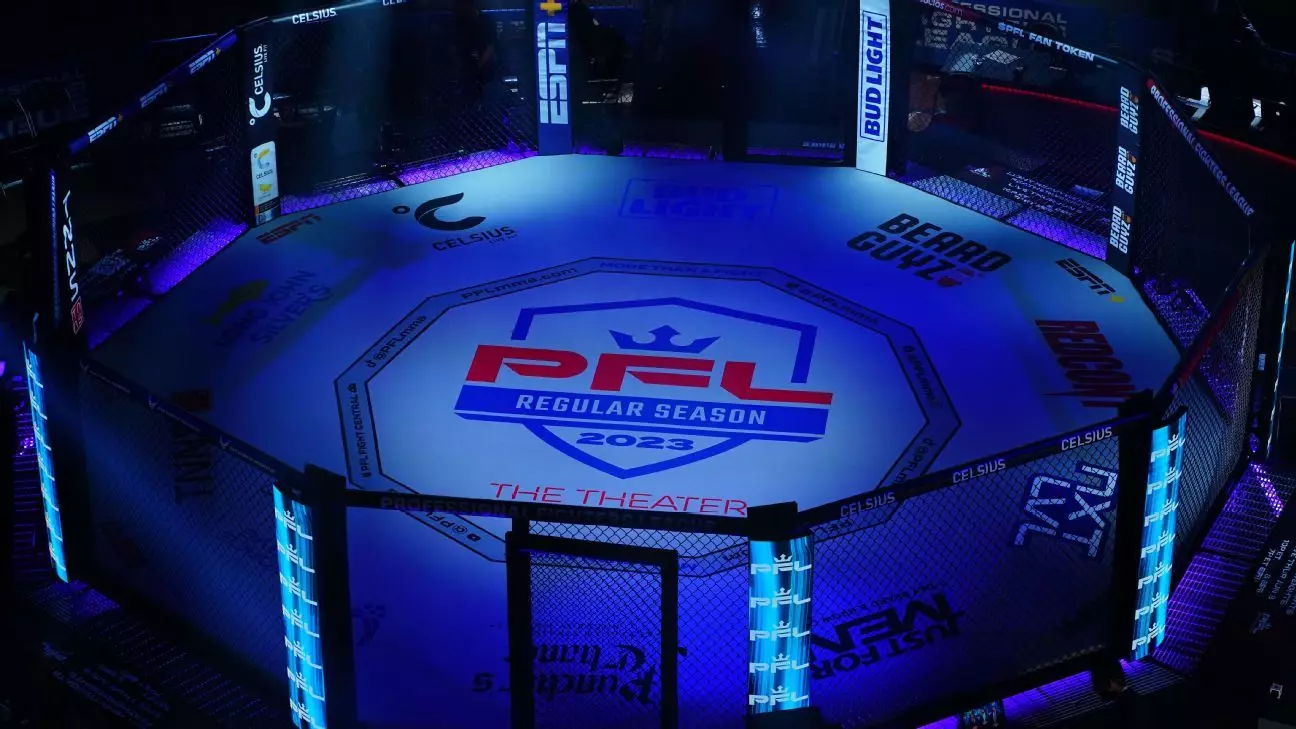The Professional Fighters League (PFL) is set to embark on a transformative journey starting in 2025, reimagining its tournament structure and further integrating its recently acquired Bellator MMA promotion. As the PFL innovates its fight format and consolidates its offerings, fans and fighters alike can expect significant changes that will redefine competitive mixed martial arts (MMA).
One of the most significant shifts in the PFL’s strategy for 2025 is the introduction of a new tournament format that will replace the long-standing “season” setup established since 2018. Gone are the playoffs and lengthy competition periods; instead, the PFL is set to implement a single-elimination format. This year’s World Tournament will feature a total of 24 fighters spread across eight weight classes, with the competition running from April through August. This restructuring aims to create a more dynamic and attention-grabbing series of matches, which CEO Peter Murray argues will engage fans in a more immediate and compelling manner.
The decision to pivot towards a single-elimination format speaks to a deeper philosophy within the PFL. Murray asserts that the reimagined structure aligns with their commitment to a merit-based system, where every fighter is afforded a genuine opportunity to clinch victory. The compressed timeline not only heightens the stakes for individual bouts but also provides a fresh appeal for a broader audience.
As part of this strategic overhaul, the PFL has announced a definitive end to its operations under the Bellator MMA banner. Following the acquisition of Bellator in late 2023, the PFL had initially intended to maintain it as a separate entity. However, in 2025, the Bellator brand will be absorbed completely into the PFL framework, effectively dissolving an organization that has played a significant role in the MMA landscape since its inception in 2008.
The implications of this change are substantial. The PFL aims to unify champions across all weight classes, streamlining the championship process and eliminating the duplication of titles that occurred between PFL and Bellator. The mechanics of how current Bellator champions will transition into the PFL system remain murky; it is yet to be announced whether existing titleholders will simply be absorbed or if they will have to compete for vacant titles.
Murray has underscored that the primary goal of acquiring Bellator was to bolster its roster with top-tier talent, thereby enhancing the overall quality of competition within the PFL. There are concerns, however, as noted by fighters like Patricio “Pitbull” Freire and Gegard Mousasi, who have expressed dissatisfaction with the transition. While the PFL has seen substantial turnover in its roster—reportedly over 30% annually—Murray remains optimistic, stating that the majority of Bellator fighters are poised to join the PFL under the new structure.
In conjunction with the structural changes, the PFL is also adjusting its financial model. Traditionally, PFL seasons featured six weight classes and culminated in a $1 million championship prize. However, for the upcoming event, there will be eight weight classes with a revised prize pool of $500,000 per finals matchup. Overall, the promotion plans to disperse over $20 million in total prize money, signifying a commitment to incentivizing high-level competition.
The tournament’s new structure will follow a standard seeding format, further reinforcing the meritocratic principles that the PFL champions. The announcement of participant rosters is slated for February, promising an exciting lead-up to the tournament.
As the PFL gears up for its new season, it is also looking to expand its global footprint. The launch of PFL Africa is anticipated for the summer, joining existing operations in Europe and the MENA region. Future plans for a PFL Pacific division signal the organization’s ambition to reach international markets and promote MMA on a truly global scale.
Francis Ngannou, a marquee fighter who recently transitioned into the boxing arena, remains central to these initiatives. With ambitions spanning both boxing and MMA, Ngannou’s plans for future fights will likely shape PFL’s tactical decisions moving forward. The involvement of a high-profile athlete like Ngannou could prove crucial in generating interest and viewership across new markets.
The changes planned for 2025 represent a significant evolution for the PFL, as it seeks to establish itself as a dominant force in the world of mixed martial arts. By adopting a fresh tournament structure, unifying the Bellator brand, and aiming for expansion into new regions, the PFL is setting ambitious goals that could reshape the competitive landscape of MMA. As these transformations unfold, both fans and athletes will be keeping a close watch on how the league develops in this exciting new chapter.


Leave a Reply